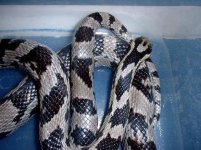-
Hello!
Either you have not registered on this site yet, or you are registered but have not logged in. In either case, you will not be able to use the full functionality of this site until you have registered, and then logged in after your registration has been approved.
Registration is FREE, so please register so you can participate instead of remaining a lurker....
Please be certain that the location field is correctly filled out when you register. All registrations that appear to be bogus will be rejected. Which means that if your location field does NOT match the actual location of your registration IP address, then your registration will be rejected.
Sorry about the strictness of this requirement, but it is necessary to block spammers and scammers at the door as much as possible.
You are using an out of date browser. It may not display this or other websites correctly.
You should upgrade or use an alternative browser.
You should upgrade or use an alternative browser.
anery B ???
- Thread starter fluffyboa
- Start date
okccornsnakes
New member
Anerythristic Type "A" • This morph lacks erythrophores, the red pigment in the skin. This type tends to posess a large amount of yellow pigmentation in the neck. It is NOT compatible with Type "B" Anerythrism.
Anerythristic Type "B" • This morph lacks erythrophores, the red pigment in the skin. This type tends to posess a large amount of yellow pigmentation in the neck. It is NOT compatible with Type "A" Anerythrism. AKA : Charcoal
PER:http://www.cornsnakemorphs.com/genetics.html
Anerythristic Type "B" • This morph lacks erythrophores, the red pigment in the skin. This type tends to posess a large amount of yellow pigmentation in the neck. It is NOT compatible with Type "A" Anerythrism. AKA : Charcoal
PER:http://www.cornsnakemorphs.com/genetics.html
Yellow is not a reliable indicator of 'A' Anerythrism. At one time we thought it was, but it was only a coincidental factor. We now know that it is completely independent of the Charcoal gene.
I have lots or 'A' Anerythristics that completely lack any trace of yellow:

And some Charcoals that have substantial amounts of yellow:

You should see the mess I have in my Charcoal Ghost project....

I have lots or 'A' Anerythristics that completely lack any trace of yellow:

And some Charcoals that have substantial amounts of yellow:

You should see the mess I have in my Charcoal Ghost project....

I'm curious about this one too. There seems to be a lot of confusion between anery A and B here in the UK. Could it be proven by breeding to amels to produce blizzards? I mean, surely blizzards couldn't be confused with snows? I know this would take a while, but could possibly be worthwhile.
I think you would get more confused, no matter what you do.
The amelanistic component of the Blizzard appears to be a very rich red/orange color, much like you see on some Amelanistic Okeetees. So if you breed a Charcoal to something similar to a Candy Cane, you may not actually get what looks like a Blizzard.
I have bred Blizzard into Lavenders, Blood Reds and Butters, and the resulting Blizzards in the F2 generations are not anywhere near what you would expect. So even the Blizzard can be problematical to identify at times.
And as for breeding Charcoal to 'A' Anery, bear in mind that the original Charcoal was het for 'A' Anerythrism, so there is at least a chance that any given Charcoal may be het for 'A' Anerythrism as well. So the results you get in such a case may not clear much up at all.
I found out that my Charcoal Ghost project has 'A' Anerythrism in it, and if you want to see a confusing mess, well, boy do I have one for you there!
When it gets right down to it, we really don't know what the heck we are doing. Nearly everything is based on assumptions, which lately seem to be proving mostly false.
The amelanistic component of the Blizzard appears to be a very rich red/orange color, much like you see on some Amelanistic Okeetees. So if you breed a Charcoal to something similar to a Candy Cane, you may not actually get what looks like a Blizzard.
I have bred Blizzard into Lavenders, Blood Reds and Butters, and the resulting Blizzards in the F2 generations are not anywhere near what you would expect. So even the Blizzard can be problematical to identify at times.
And as for breeding Charcoal to 'A' Anery, bear in mind that the original Charcoal was het for 'A' Anerythrism, so there is at least a chance that any given Charcoal may be het for 'A' Anerythrism as well. So the results you get in such a case may not clear much up at all.
I found out that my Charcoal Ghost project has 'A' Anerythrism in it, and if you want to see a confusing mess, well, boy do I have one for you there!
When it gets right down to it, we really don't know what the heck we are doing. Nearly everything is based on assumptions, which lately seem to be proving mostly false.
Kat
I'm talkin' to YOU.
The amelanistic component of the Blizzard appears to be a very rich red/orange color, much like you see on some Amelanistic Okeetees.
So the most unicolor blizzards come from the brightest orange amels? That almost seems counter-intuitive...
-Kat

